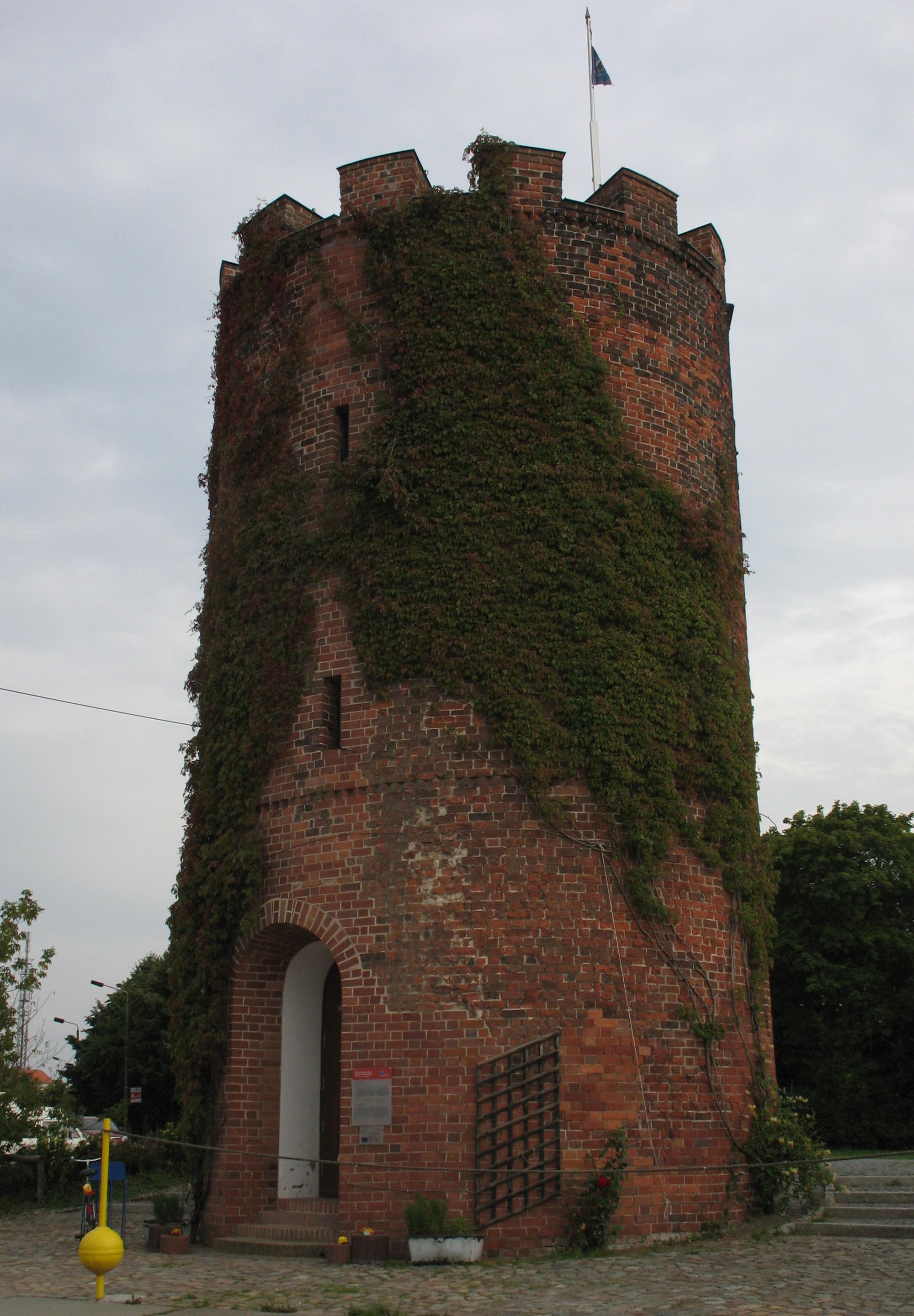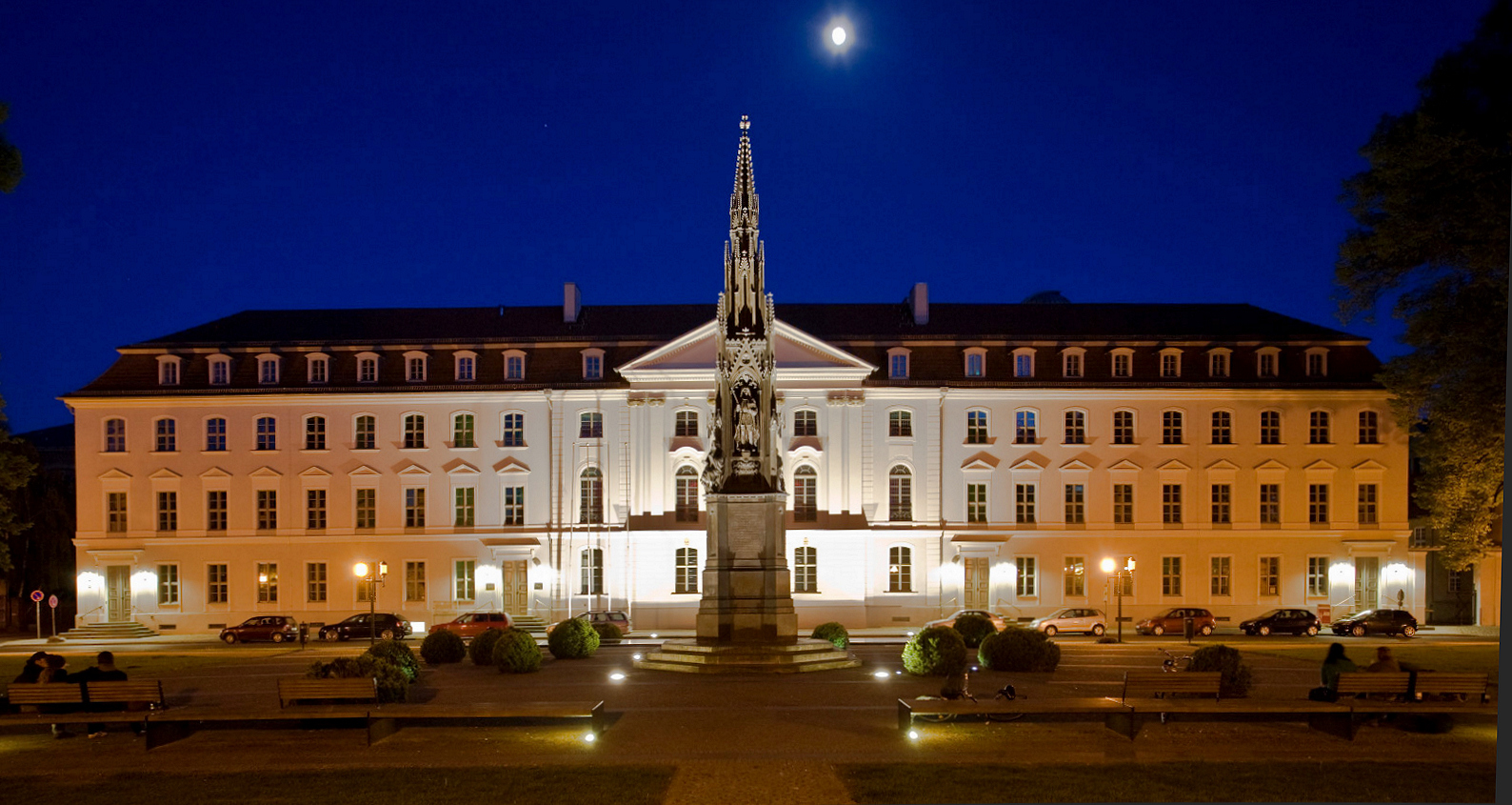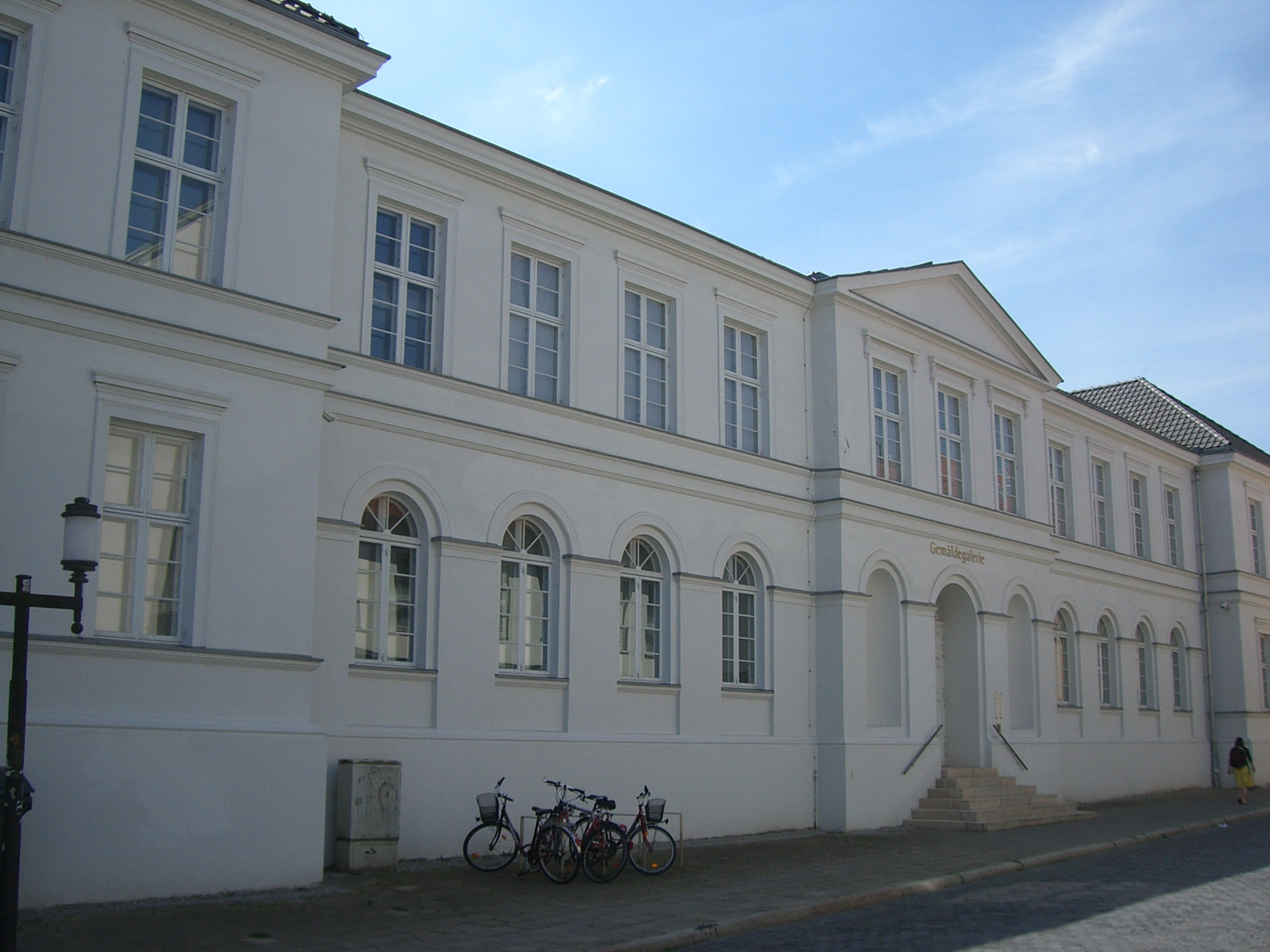|
Greifswald
Greifswald (), officially the University and Hanseatic City of Greifswald (german: Universitäts- und Hansestadt Greifswald, Low German: ''Griepswoold'') is the fourth-largest city in the German state of Mecklenburg-Western Pomerania after Rostock, Schwerin and Neubrandenburg. In 2021 it surpassed Stralsund for the first time, and became the largest city in the Pomeranian part of the state. It sits on the River Ryck, at its mouth into the Danish Wiek (''Dänische Wiek''), a sub-bay of the Bay of Greifswald (''Greifswalder Bodden''), which is itself a sub-bay of the Bay of Pomerania (''Pommersche Bucht'') of the Baltic Sea. It is the seat of the district of Western Pomerania-Greifswald, and is located roughly in the middle between the two largest Pomeranian islands of Rugia (''Rügen'') and Usedom. The closest larger cities are Stralsund, Rostock, Szczecin and Schwerin. It lies west of the River Zarow, the historical cultural and linguistic boundary between West (west of the ... [...More Info...] [...Related Items...] OR: [Wikipedia] [Google] [Baidu] |
University Of Greifswald
The University of Greifswald (; german: Universität Greifswald), formerly also known as “Ernst-Moritz-Arndt University of Greifswald“, is a public research university located in Greifswald, Germany, in the state of Mecklenburg-Western Pomerania. Founded in 1456 (teaching existed since 1436), it is one of the oldest universities in Europe, with generations of notable alumni and staff having studied or worked in Greifswald. As the fourth oldest university in present Germany, it was temporarily also the oldest university of the Kingdoms of Sweden (1648–1815) and Prussia (1815–1945), respectively. Approximately two-thirds of the 10,179 students are from outside the state, including international students from 90 countries all over the world. Due to the small-town atmosphere, the pronounced architectural presence of the alma mater across town, and the young, academic flair in the streets, Greifswald is often described as a "university with a town built around it" rather ... [...More Info...] [...Related Items...] OR: [Wikipedia] [Google] [Baidu] |
Mecklenburg-Western Pomerania
Mecklenburg-Vorpommern (MV; ; nds, Mäkelborg-Vörpommern), also known by its anglicized name Mecklenburg–Western Pomerania, is a state in the north-east of Germany. Of the country's sixteen states, Mecklenburg-Vorpommern ranks 14th in population; it covers an area of , making it the sixth largest German state in area; and it is 16th in population density. Schwerin is the state capital and Rostock is the largest city. Other major cities include Neubrandenburg, Stralsund, Greifswald, Wismar, and Güstrow. It was named after the 2 regions of Mecklenburg and Vorpommern (which means West Pomerania). The state was established in 1945 after World War II through the merger of the historic regions of Mecklenburg and the Prussian Western Pomerania by the Soviet military administration in Allied-occupied Germany. It became part of the German Democratic Republic in 1949, but was dissolved in 1952 during administrative reforms and its territory divided into the districts o ... [...More Info...] [...Related Items...] OR: [Wikipedia] [Google] [Baidu] |
Ryck
The Ryck is a river in Mecklenburg-Vorpommern, Germany. From its source near Bartmannshagen, part of the Süderholz community northeast of Grimmen, the Ryck flows for about to the east, reaching Greifswald shortly before its mouth. The larger part of the river outside Greifswald is also referred to as ''Ryckgraben''. In Greifswald, the Ryck provided both the medieval Hanseatic port and natural salt evaporation ponds, as due to the low elevation, hypersaline water of the Baltic Sea is driven into the river by the wind, flooding the lower meadows on the Ryck's northern bank. In the High Middle Ages, the Ryck marked the southern border of the Principality of Rügen and the northern border of the County of Gützkow. West of Greifswald, the Ryck fed the ''Boltenhägener Teich'', a medieval lake. The old Hanseatic port in Greifswald is now an open-air ship museum. Image:Caspar David Friedrich 043.jpg, "Meadows near Greifswald" Caspar David Friedrich Caspar David Friedrich ... [...More Info...] [...Related Items...] OR: [Wikipedia] [Google] [Baidu] |
Vorpommern-Greifswald
Vorpommern-Greifswald is a district in the east of Mecklenburg-Vorpommern, Germany. It is bounded by (from the west and clockwise) the districts of Mecklenburgische Seenplatte and Vorpommern-Rügen, the Baltic Sea, Poland ( West Pomeranian Voivodeship) and the state of Brandenburg. The district seat is the University and Hanseatic City of Greifswald. A lake called Berliner See is found in the district. History Vorpommern-Greifswald District was established by merging the former districts of Ostvorpommern and Uecker-Randow; along with the subdivisions of Jarmen-Tutow and Peenetal/Loitz (from the former district of Demmin), and the former district-free town Greifswald, as part of the local government reform of September 2011. The name of the district was decided by referendum on 4 September 2011. The project name for the district was ''Südvorpommern''. Geography The district has a number of lakes including: The island of Usedom Usedom (german: Usedom , pl, Uznam ) ... [...More Info...] [...Related Items...] OR: [Wikipedia] [Google] [Baidu] |
Bay Of Greifswald
The Bay of Greifswald''Utrata Fachwörterbuch: Geographie - Englisch-Deutsch/Deutsch-Englisch'' by Jürgen Utrata (2014). Retrieved 10 Apr 2014. or Greifswald Bodden (german: Greifswalder Bodden) is a basin in the southwestern , off the shores of Germany in the state of [...More Info...] [...Related Items...] OR: [Wikipedia] [Google] [Baidu] |
Pomerania
Pomerania ( pl, Pomorze; german: Pommern; Kashubian: ''Pòmòrskô''; sv, Pommern) is a historical region on the southern shore of the Baltic Sea in Central Europe, split between Poland and Germany. The western part of Pomerania belongs to the German states of Mecklenburg-Western Pomerania and Brandenburg, while the eastern part belongs to the West Pomeranian, Pomeranian and Kuyavian-Pomeranian voivodeships of Poland. Its historical border in the west is the Mecklenburg-Western Pomeranian border ''Urstromtal'' which now constitutes the border between the Mecklenburgian and Pomeranian part of Mecklenburg-Western Pomerania, while it is bounded by the Vistula River in the east. The easternmost part of Pomerania is alternatively known as Pomerelia, consisting of four sub-regions: Kashubia inhabited by ethnic Kashubians, Kociewie, Tuchola Forest and Chełmno Land. Pomerania has a relatively low population density, with its largest cities being Gdańsk and Szczecin ... [...More Info...] [...Related Items...] OR: [Wikipedia] [Google] [Baidu] |
Lubmin
Lubmin () is a coastal resort in the German state of Mecklenburg-Vorpommern. Lubmin is situated near Greifswald and on the Bay of Greifswald. Apart from tourism, Lubmin is a major transport and industry hub and investment location in the German energy sector. Both the Nord Stream 1 gas pipeline from Russia (by ''Gazprom'' and '' E.ON'') and several power plants (by '' Ørsted A/S'' and '' EnBW'') are under construction. Moreover, Lubmin is the administrative seat of ''Amt Lubmin'', to which nine other municipalities belong. Geographical location To the north of Lubmin lies the Bay of Greifswald. The northeast edge of the municipality consists of the Struck peninsula which is bounded by the mouth of the Peenestrom delta. The seaside resort has a kilometer-long sand beach and is largely covered by pine woods. Neighbouring municipalities Lubmin's immediate neighbouring municipalities are Kröslin and Rubenow to the southeast, Wusterhusen to the south and Brünzow to the southw ... [...More Info...] [...Related Items...] OR: [Wikipedia] [Google] [Baidu] |
Wendelstein 7-X
The Wendelstein 7-X (abbreviated W7-X) reactor is an experimental stellarator built in Greifswald, Germany, by the Max Planck Institute for Plasma Physics (IPP), and completed in October 2015.Introduction – the Wendelstein 7-X stellarator Retrieved 5 November 2014. Its purpose is to advance stellarator technology: though this experimental reactor will not produce electricity, it is used to evaluate the main components of a future plant; it was developed based on the predecessor experimental reactor. , the ... [...More Info...] [...Related Items...] OR: [Wikipedia] [Google] [Baidu] |
Pomeranian State Museum
The Pomeranian State Museum (german: Pommersches Landesmuseum) in Greifswald, Western Pomerania, is a public museum primarily dedicated to Pomeranian history and arts. The largest exhibitions show archeological findings and artefacts from the Pomerania region and paintings, e.g. of Caspar David Friedrich, a Greifswald local, such as '' Ruins of Eldena Abbey in the Riesengebirge''. The museum was established in the years of 1998 to 2005 at the site of the historical Franziskaner abbey. Near Binz on the nearby isle of Rügen, a satellite of the museum is under construction at '' Jagdschloss Granitz'', a former hunting lodge of the Rugian princes. This branch will be designated to Rugian history. An early 20th century museum in Stettin, then capital of the Province of Pomerania, was the "Provinzialmuseum pommerscher Altertümer", which was also named "Pommersches Landesmuseum" (Pomerania State Museum) since 1934.Werner Buchholz, ''Pommern'', Siedler, 1999, p. 438, Ga ... [...More Info...] [...Related Items...] OR: [Wikipedia] [Google] [Baidu] |
Nord Stream 1
Nord Stream (German-English mixed expression; german: Nord and en, Stream, literally 'North Stream'; russian: Северный поток, ''Severny potok'') is a pair of offshore natural gas pipelines in Europe that run under the Baltic Sea from Russia to Germany. It comprises the Nord Stream 1 (NS1) pipeline running from Vyborg in northwestern Russia, near Finland, and the Nord Stream 2 (NS2) pipeline running from Ust-Luga in northwestern Russia near Estonia. Both pipelines run to Lubmin in the northeastern German state of Mecklenburg-Vorpommern. Each pipeline comprises two pipes, denoted A and B, each of the four pipes being approximately long and with approximate diameters of . The combined capacity of the four pipes is of natural gas. The name "Nord Stream" sometimes refers to a larger pipeline network that includes the feeding onshore pipeline in Russia and additional connections in Western Europe. These Nord Stream projects have faced opposition from some Central ... [...More Info...] [...Related Items...] OR: [Wikipedia] [Google] [Baidu] |
Rügen
Rügen (; la, Rugia, ) is Germany's largest island. It is located off the Pomeranian coast in the Baltic Sea and belongs to the state of Mecklenburg-Western Pomerania. The "gateway" to Rügen island is the Hanseatic city of Stralsund, where it is linked to the mainland by road and railway via the Rügen Bridge and Causeway, two routes crossing the two-kilometre-wide Strelasund, a sound of the Baltic Sea. Rügen has a maximum length of (from north to south), a maximum width of in the south and an area of . The coast is characterized by numerous sandy beaches, lagoons () and open bays (), as well as projecting peninsulas and headlands. In June 2011, UNESCO awarded the status of a World Heritage Site to the Jasmund National Park, famous for its vast stands of beeches and chalk cliffs like King's Chair, the main landmark of Rügen island. The island of Rügen is part of the district of Vorpommern-Rügen, with its county seat in Stralsund. The towns on Rügen are: Berg ... [...More Info...] [...Related Items...] OR: [Wikipedia] [Google] [Baidu] |
Swedish Pomerania
Swedish Pomerania ( sv, Svenska Pommern; german: Schwedisch-Pommern) was a dominion under the Swedish Crown from 1630 to 1815 on what is now the Baltic coast of Germany and Poland. Following the Polish War and the Thirty Years' War, Sweden held extensive control over the lands on the southern Baltic coast, including Pomerania and parts of Livonia and Prussia (''dominium maris baltici''). Sweden, which had been present in Pomerania with a garrison at Stralsund since 1628, gained effective control of the Duchy of Pomerania with the Treaty of Stettin in 1630. At the Peace of Westphalia in 1648 and the Treaty of Stettin in 1653, Sweden received Western Pomerania (German ''Vorpommern''), with the islands of Rügen, Usedom, and Wolin, and a strip of Farther Pomerania (''Hinterpommern''). The peace treaties were negotiated while the Swedish queen Christina was a minor, and the Swedish Empire was governed by members of the high aristocracy. As a consequence, Pomerania was not anne ... [...More Info...] [...Related Items...] OR: [Wikipedia] [Google] [Baidu] |






